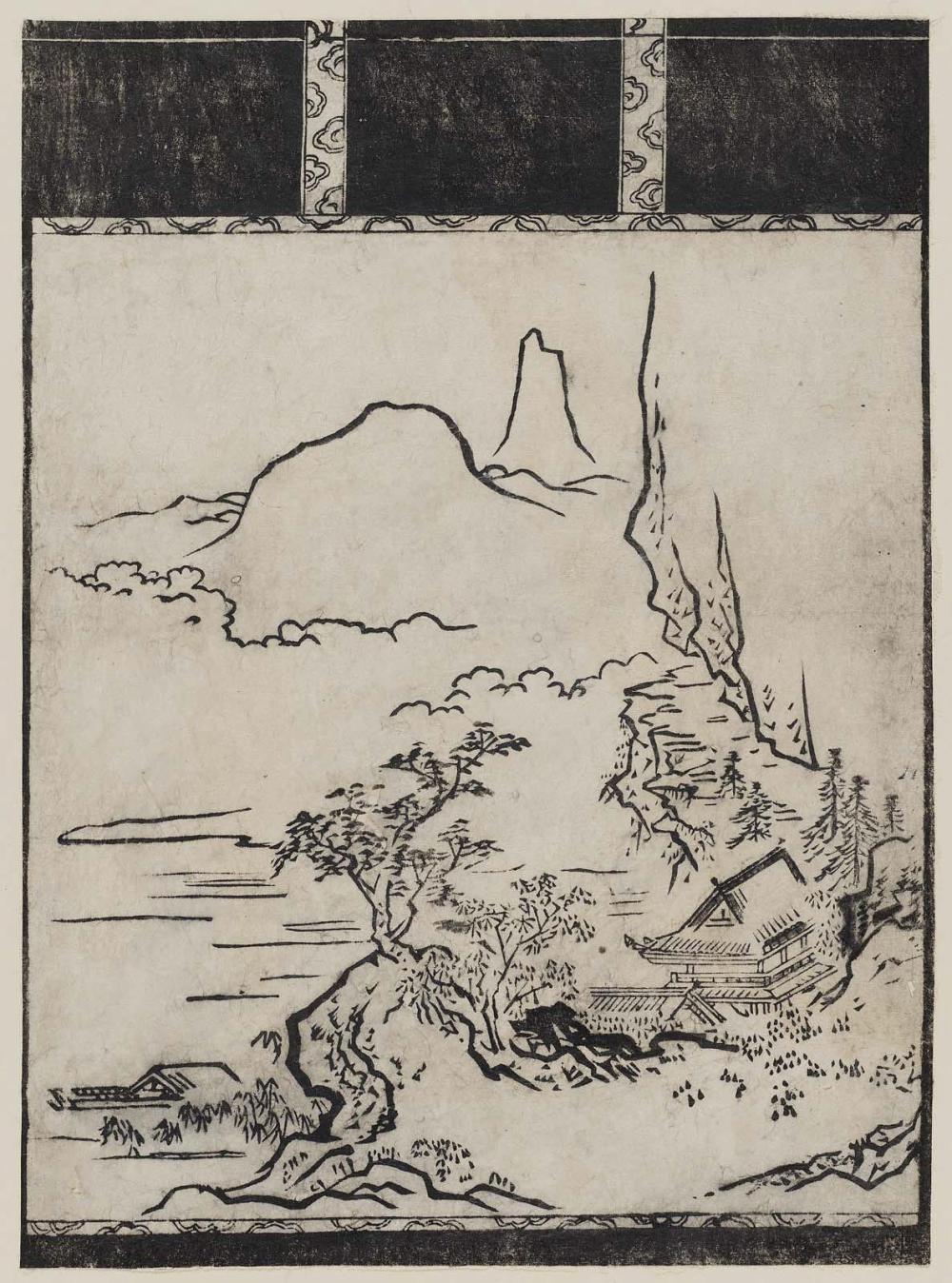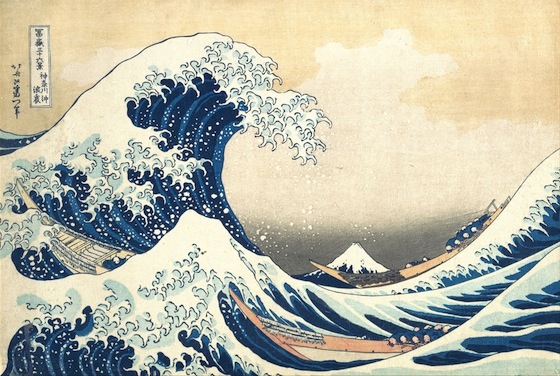Non-Western: Japan's Woodblock Prints
Here are some examples of Japanese Woodblock Prints :)

 |
| Under the Wave Off Kanagawa (The Great Wave) |
Under the Wave Off Kanagawa, also known as The Great Wave, by Katsushika Hokusai created ca. 1830-1932 is one of the most famous artworks in the world and debated to be the most iconic and recognizable work of Japanese art. The Great Wave is part of Hokusai's print series titled Thirty-six views of Mount Fuji, which was created between the years 1830 and 1833, and all images within the series illustrate a glimpse of Mount Fuji in various aspects (as it is not always the dominant focus). This print depicts a scene in the area around Mount Fuji (seen in the background) under stormy weather conditions, where enormous waves are about to consume the area and emphasize a threat for the fishing boats off that coast of Kanagawa (the town during the creation of the print). When it comes to the Great Wave, it is noticeable that it is composed of visual play, especially as Hokusai had an interest in linear perspective, oblique angles, and the contrast of near and far. We can see how Mount Fuji is illustrated small in the background, and with his use of perspective, it appears as if the waves were swallowing up the mountain alongside the struggling fishing boats in the middle of the water. I really like how the elements in this print are so eloquently presented, from the color usage to the emphasis of the proportions and perspective, as although it offers the feeling of a calm wave, the context of the piece is actually somewhat darker than it lets on.
 |
| The Lumberyards at Fukagawa (Fukagawa Kiba) |
The Lumberyard at Fukagawa is an 1856 colour print by Utagawa Hiroshige. It is No. 106 of his One Hundred Famous Views of Edo series, which consists of 119 ukiyo-e prints, and was mostly completed by him until his death in 1856, where then Hiroshige II completed the series. In the early Edo period, lumber was often kept close to the center of town; however, due to a fire in 1641 that destroyed both the houses and the lumber supply to rebuild with, the government ordered for the lumber to be to the Fukagawa district. This print depicts the Fukagawa lumberyards, which was the site of the major lumber supply source and was of great economic importance, with snowfall during the wintertime. For this print, Hiroshige was able to illustrate such a serene atmosphere at the lumberyard, and because of the use of the vibrant blue for the water and little extra colors, this is one of his brightest prints for the winter section of the series. One of the things I really liked was the small detail of how there were several pairs of things, and how they contrasted the snow's white color, such as the two loggers (individuals by water), the two flying sparrows, and the two dogs on the left. Alongside the paired group, which had colored detailing, I also liked the colored umbrella in the bottom center of the print.
 |
| Night Scene of Kasuga Shrine |
The Night Scene of Kasuga Shrine is a 1951 woodblock print by Asano Keji. The image depicts silhouettes of individuals coming to visit the Kasuga Shrine during the nighttime. I could not find much information about the artists and the specific piece, but I was able to find an array of Keji's landscape and cityscape works. When it comes to this print, I like how the colors are more dulled down and not as vibrant, giving it a more calming night atmosphere. This could be from the transfer of the ink from the wood during its creation, as if you focus, you can slightly see some sort of texture in the upper half. Alongside the color scheme, I like how the artist was able to capture the light effect from the lanterns around the shrine and create that shadow effect accordingly.
Conclusion:
I really enjoy seeing the transition from portray-styled prints to landscape prints, especially with how the technique has developed since its initial popularization. I find woodblock printing fascinating, and hopefully, one day will be able to own a copy of a print (even if it's just a reprint on paper).
Works Cited:
“ASANO, TAKEJI.” Japanese Woodblock Prints, 3 Apr. 2018, woodblockprint.com.au/shin-hanga/asano-takeji/.
Chinese-Style Landscape,.with Hanging Scroll Mounting, from an Unidentified Book – Works – Museum of Fine Arts, Boston, collections.mfa.org/objects/256171.
Descending Geese at Katada (Katada Rakugan), from the Series Eight Views of Ômi (Ômi Hakkei) – Works – Museum of Fine Arts, Boston, collections.mfa.org/objects/256384.
Johngaber. “Art Analysis & Critique – The Great Wave of Kanagawa.’” John Gaber's Blog, 11 Oct. 2017, johngaber.wordpress.com/2017/10/11/art-analysis-critique-the-great-wave-of-kanagawa/.
Metmuseum.org, www.metmuseum.org/toah/hd/ukiy/hd_ukiy.htm#:~:text=Woodblock%20prints%20were%20initially%20used,designs%20on%20paper%20and%20silk.
Person. “Collecting Guide: Japanese Woodblock Prints.” Christie's, Christies, 4 June 2020, www.christies.com/features/Collecting-guide-Japanese-woodblocks-10524-3.aspx.
“The Evolution of Ukiyo-e and Woodblock Prints (Article).” Khan Academy, Khan Academy, www.khanacademy.org/humanities/art-asia/art-japan/edo-period/a/the-evolution-of-ukiyo-e-and-woodblock-prints.
“Under the Wave off Kanagawa (The Great Wave) by Hokusai (Article).” Khan Academy, Khan Academy, www.khanacademy.org/humanities/ap-art-history/south-east-se-asia/japan-art/a/hokusai-under-the-wave-off-kanagawa-the-great-wave.
I really enjoyed reading your post, I did mine on the same topic, and liked seeing what someone else had to say about it. My favorite type of work in this style has got to be the landscapes, I liked your feature on "The Lumberyards at Fukagawa”, that’s an amazing piece. The last one you featured was one I haven’t seen before and I found the use of colors and shading to establish depth to really set it apart from other prints. Japan is home to many unique styles and someday I want to visit and see more work like this in person.
ReplyDelete